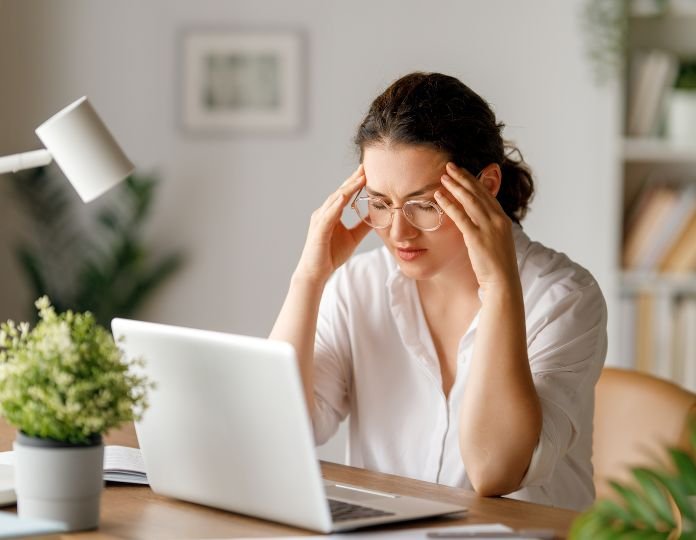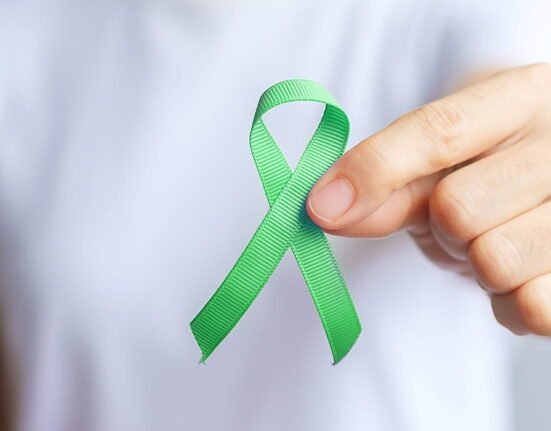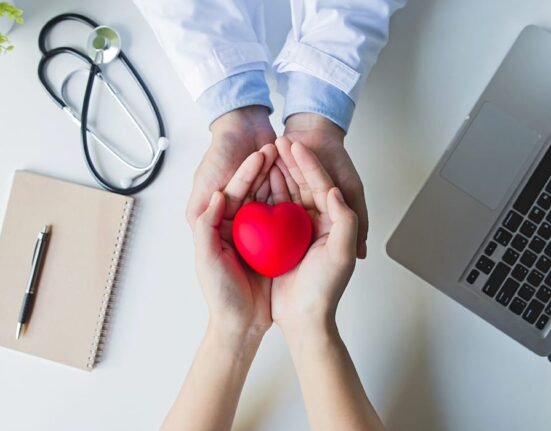Around 17.1% to 19.2% of women and about 5.6% to 7.2% of men are struggling in the USA with migraines. We have all experienced migraines in our daily lives. Some were severe, and some were bearable. These intense migraines feel like throbbing pulse pain right in the temple nerve. When migraines show up, they feel like never-ending pains.
You might want to throw up, and everything surrounding you may feel too bright or loud. Just unbearable! It’s super annoying when migraines show up out of nowhere before important meetings or daily. We are going to give you some quick ways to get rid of them. Let’s seek a solution together for effective migraine relief without medication.
Understanding Migraine and Its Causes
One more thing that needs to be noted here is you can divide migraines into two types:
- Migraine with aura: This type will show you early signs indicating headaches. (Such as flashing light, numbness, or tingling)
- Migraine without aura: This type gives no warning signs before they occurs.
Common Triggers of Migraines
A variety of factors can give you migraine, including:
| Environmental factors | Physical and hormonal factors |
| Emotional and physical stress, | Genetic predisposition |
| Certain foods and drinks | Fluctuations in hormone levels |
| Exposure to bright lights or loud noises | Menstruation, pregnancy, or menopause |

Why Does Acting Quickly Matter in Migraine Relief?
Migraines progress in stages. It will start with a prodrome phase (early warning signs) followed by the aura phase. You will feel visual and sensory disturbance, followed by the intense pain of headaches. Lately, it will end with a postdrome phase where you will deal with fatigue and difficulty in concentration. When you get familiar with these migraine stages, taking early action will differently reduce its severity and duration of time to stay. Prompt treatment with medications can help you with symptoms and stop the headache from worsening.
Immediate Relief Techniques for Migraine
1. Over-the-Counter Medications
One of the best or let’s say, most common ways to stop migraine is to pop in some over-the-counter medications. It relieves the pain for an hour or stops it once and for all. You can get quick relief if you have the correct pain relievers. Best OTC Pain Relievers:
- Ibuprofen (It reduces your inglamtion and pain)
- Aspirin (Perfect for fever and inflammation)
- Acetaminophen (A quick pain reliever and fever reducer)
Combination Therapy
Add caffeine with over-the-counter pain relievers to get effectiveness in minimal time. Caffeine constricts blood vessels in the brain. This process reduces pain. Just to be on the safe side, consult with a doctor first before combining medications. You can face serious problems if you are combing while dealing with underlying health issues.
2. Cold Compress Therapy
Another hack that works like a pain reliever when you are crying over the pain. A cold compressor can relieve you from inflammation and numb the pain of your migraine.
How to use:
- Take an ice pack in a thin cloth or use an ice bag
- Don’t expose the ice directly to the skin
- Place the cold compressor on your forehead, temples, or the back of your neck
- Apply the compressor for 15 to 20 minutes
- Remove it for another 15 to 20 minutes and reapply it
3. Caffeine’s Role in Alleviating Migraine Pain
Caffeine has its role in relieving migraine pain. It can constrict the blood vessels in the pain to stop the intense pain. It can also complement the effectiveness of pain relievers.
Recommended intake:
- A cup of coffee can be a quick dose of caffeine
- Black tea or green tea also contains caffeine, which will help
- Caffeine pills are another convenient way to get a dose of caffeine
[Note: Excessive caffeine intake can increase the side effects of anxiety and insomnia, so watch out]
4. Using Essential Oils and Aromatherapy
Essential oils have always been a solution to soothe pain or stress. Some essential oils have been shown to relieve migraine pain effectively. Let’s see the list:
- Peppermint oil: Popular for its cooling and analgesic compounds. Reduce pain and nausea.
- Lavender oil: Filled with calming properties. Educe stress and anxiety that can trigger migraines.
How to use:
- Dilute the oil with a few drops of essential oils
- You can mix it with coconut oil or almond oil
- Gently massage it into your temples
- You can also inhale the aroma directly from the bottle
- You store it in a diffuse and keep it in a corner of a room
5. Quick Massage Techniques
Self-massage or getting a massage can help relieve the tension and reduce migraine pain.
- You can try gently massaging your temples in circular motions
- Apply gentle pressure to the muscles at the base of your skull
- Giving a neck and shoulder massage will also help with the pain
You can try these steps and techniques alongside your medication to help manage your migraine pain. They might also help cut down on how often you get migraines and how intense they are.
Lifestyle and Dietary Adjustments for Long-Term Relief
1. Dietary Adjustments to Prevent Migraines
| Food to avoid | Foods to incorporate |
| Alcohol | Plenty of water |
| Processed foods | Fruits and Vegetables |
| Aged cheeses | Whole grains |
| Chocolate | Protein Lean |
| Cured meats | Fluids |
| Excessive caffeine | High-fat and low-carbohydrate foods |
2. Importance of Hydration
- Dehydration can trigger migraine. It also slows down the blood flow to the brain
- Aim for 8 to 10 glasses of daily water intake
- Always carry a reusable water bottle with yourself
- Eat water-rich fruits and vegetables
- Try drinking herbal teas
3. Sleep Hygiene for Migraine Management
- 7 to 8 hours of a consistent sleep pattern each night
- Maintain a regular sleep schedule
- Create a relaxing bedtime routine
- Avoid screen time before bed and after lying down
- Make the room atmosphere dark, quiet, and cool for a better sleep environment
4. Stress Management Techniques
- Stress can trigger migraine, so try to avoid it
- You can do deep breathing exercises for immediate relief
- Incorporate meditation into daily routine
- Try doing yoga
Medical Treatments and Preventive Measures
1. Prescription Medications
| Triptans | Ergotamines |
| This medication changes the blood circulation in the brain. It mostly narrows blood vessels in the brain to relieve migraine pain. | This one is also narrowed down to the blood vessel but is lesser known due to potential side effects. |
[Note: Do not take self-prescribed medication. Always consult with a health care provider for proper diagnosis and treatment.]
2. Preventive Therapies for Chronic Migraine Sufferers
| Botox injection | CGRP inhibitor |
| It will help you reduce the frequency of migraines by blocking nerve signals that trigger pain. | This one targets a specific protein in migraine attacks. |
[Note: Preventive Therapies will take several weeks to actually work]
When to See a Doctor for Persistent Migraines?
Consult a healthcare professional if:
- Migraine are severe, frequent, and disabling
- Over-the-counter medications aren’t working anymore
- You experience an aura system
- You are way too worried about the side effects of the medications
Alternative Therapies for Migraine Relief
In addition to medication, you can try these at-home therapies or incorporate them into your daily lifestyle to prevent migraines or reduce their frequency.
Frequently Asked Questions
1. What is the quickest way to stop a migraine without medication?
- Find a dark and quiet room to stop sensory stimuli
- Apply a cold compressor to numb the pain
- Hydrate yourself
2. Can caffeine help a migraine go away faster?
Yes, you can relieve migraines by taking a moderate caffeine dose.
3. Are there any foods that can instantly relieve a migraine?
Not instantly, but you can build a balanced diet to avoid migraine. You must avoid aged cheese, chocolate, and alcohol.
4. When should I see a doctor for my migraines?
If migraine pain becomes severe and frequent, symptoms like aura or neurological issues indicate it’s time to seek professional help.
5. How long does it take for over-the-counter medications to relieve a migraine?
Over-the-counter medications take 30 to 60 minutes to show results. However, the duration depends on your medications and the severity of the pain.













Leave feedback about this